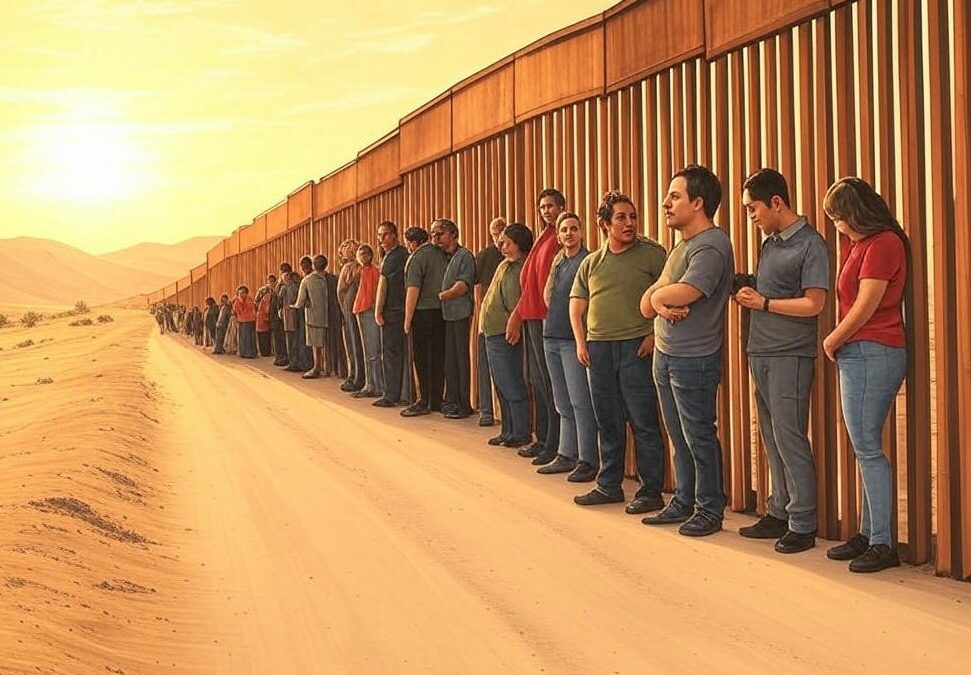Latest Developments in Asylum Procedures
Since President Trump’s inauguration in January 2025, U.S. asylum procedures have undergone significant shifts aimed at restricting access and expediting removals. Key changes include:
- Overhaul of CBP One App: The CBP One app, previously used to schedule asylum appointments at the U.S.-Mexico border, was relaunched around March 10, 2025, to facilitate “self-deportation” rather than asylum processing. All existing appointments were canceled immediately after Trump took office, effectively halting legal entry for many asylum seekers. The border is now largely closed to irregular crossings, with new executive orders classifying such entries as illegal and authorizing rapid deportations without asylum hearings.
- Increased Detentions and Deportations: Asylum seekers entering through legal channels, like CBP One, are now more likely to be detained rather than released pending hearings. ICE has ramped up enforcement, deporting individuals to third countries such as Panama and El Salvador—over 100 from countries like Afghanistan and Russia were sent to Panama recently, and Venezuelans have been deported to El Salvador. These actions often occur without allowing migrants to present asylum claims.
- Policy Proposals: The administration is considering a new travel ban targeting Afghans and Pakistanis and may revoke protections for Ukrainians granted under Biden, potentially leading to their deportation. These measures, still in discussion as of mid-March, could further narrow eligibility for asylum.
- Legal Challenges: The ACLU and other groups have filed lawsuits arguing that the border closure and suspension of asylum violate the 1980 Refugee Act, which guarantees the right to seek asylum. However, outcomes remain uncertain, and the current policy prioritizes deterrence over humanitarian processing.
Impact on Asylum Cases Pending Since 2015
For asylum cases submitted in 2015 and still pending—part of the estimated 3.6 million-case backlog in U.S. immigration courts—these changes introduce both challenges and potential shifts:
- Ongoing Validity: If you filed Form I-589 in 2015 and your case remains active (either with USCIS or in immigration court), it is still legally valid under current law. The one-year filing deadline doesn’t apply retroactively, and pending cases can still offer deportation protection and work permit eligibility. However, the practical ability to pursue these cases is increasingly constrained.
- Risk of Detention and Removal: The intensified enforcement climate means that individuals with pending 2015 cases could face ICE detention during routine check-ins, especially if they lack legal representation or if their cases involve heightened scrutiny (e.g., from certain countries flagged for security concerns). Those detained may struggle to access lawyers or case materials, as reports note limited internet and document access in detention centers.
- Judicial Variability: Outcomes for 2015 cases depend heavily on the assigned immigration judge. Some judges deny nearly all claims—e.g., a Turkish asylum seeker’s 2025 rejection by a judge with a near-zero approval rate highlights this disparity. With a backlog stretching back a decade, your case might face a judge under pressure to clear dockets quickly, potentially reducing thoroughness.
- Deportation Pressure: If your 2015 claim was denied and you’re appealing, the push for rapid removals could expedite deportation before appeals conclude. For those still awaiting initial hearings, the suspension of new asylum processing doesn’t directly cancel your case, but it signals a system less inclined to grant relief, especially if you’re undocumented or from a country now targeted by policy shifts.
- Work Permits: If you have a work permit based on your 2015 application, it remains valid and renewable every two years, provided you apply before it expires. However, new applicants in your situation (post-2025) face a tougher path, which could indirectly strain resources for processing renewals.
Broader Implications
The current backlog, worsened by years of underfunding and now by policy upheaval, means many 2015 cases have lingered without resolution. The Trump administration’s focus on clearing this backlog through deterrence rather than adjudication could push older cases toward faster—potentially unfavorable—decisions. Legal advocates note that errors in initial 2015 applications (common due to shorter interviews or lack of counsel at the time) might now face stricter scrutiny, reducing approval odds.
For specifics on your case, details like your country of origin, current legal status, or whether you’re in court proceedings would refine this analysis. Without that, the general outlook is one of heightened risk: while your 2015 filing isn’t voided, the system’s shift toward exclusion could truncate your process or lead to removal before a final ruling. Let me know if you’d like me to dig deeper into any part of this!

